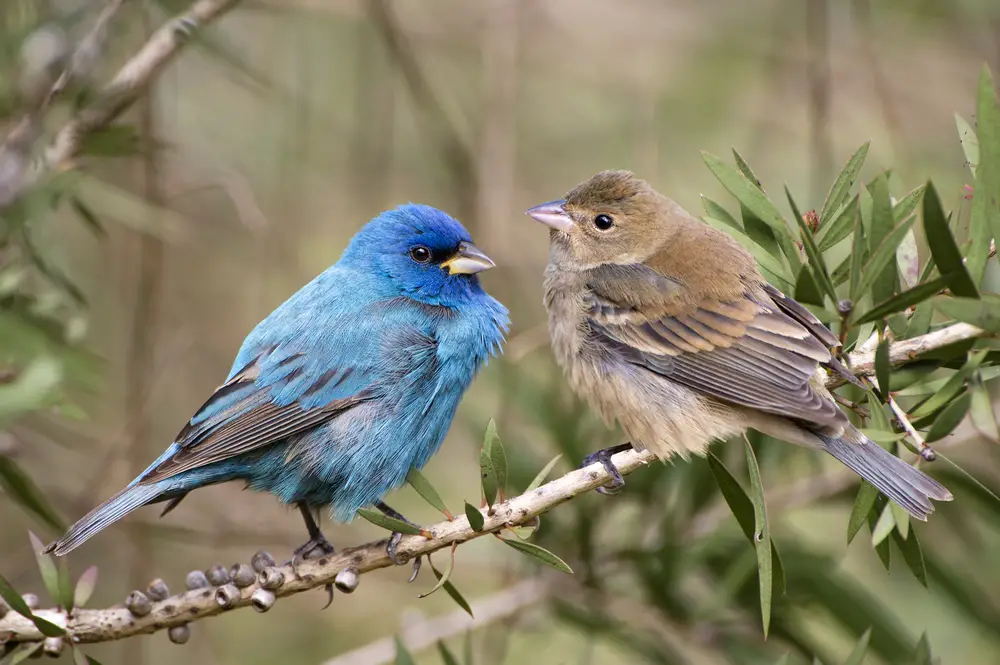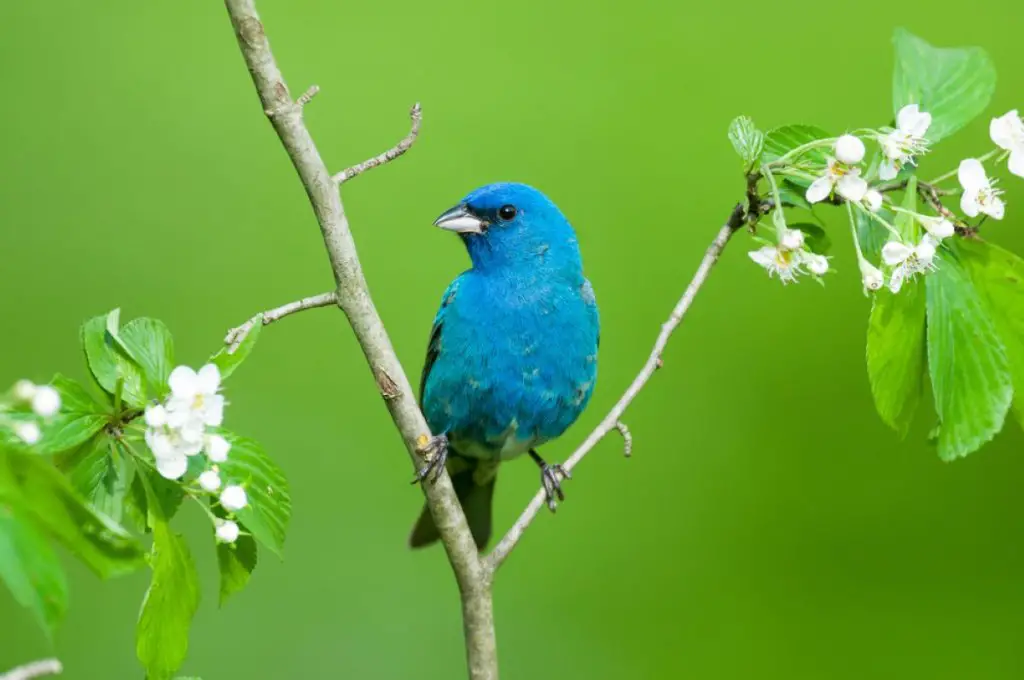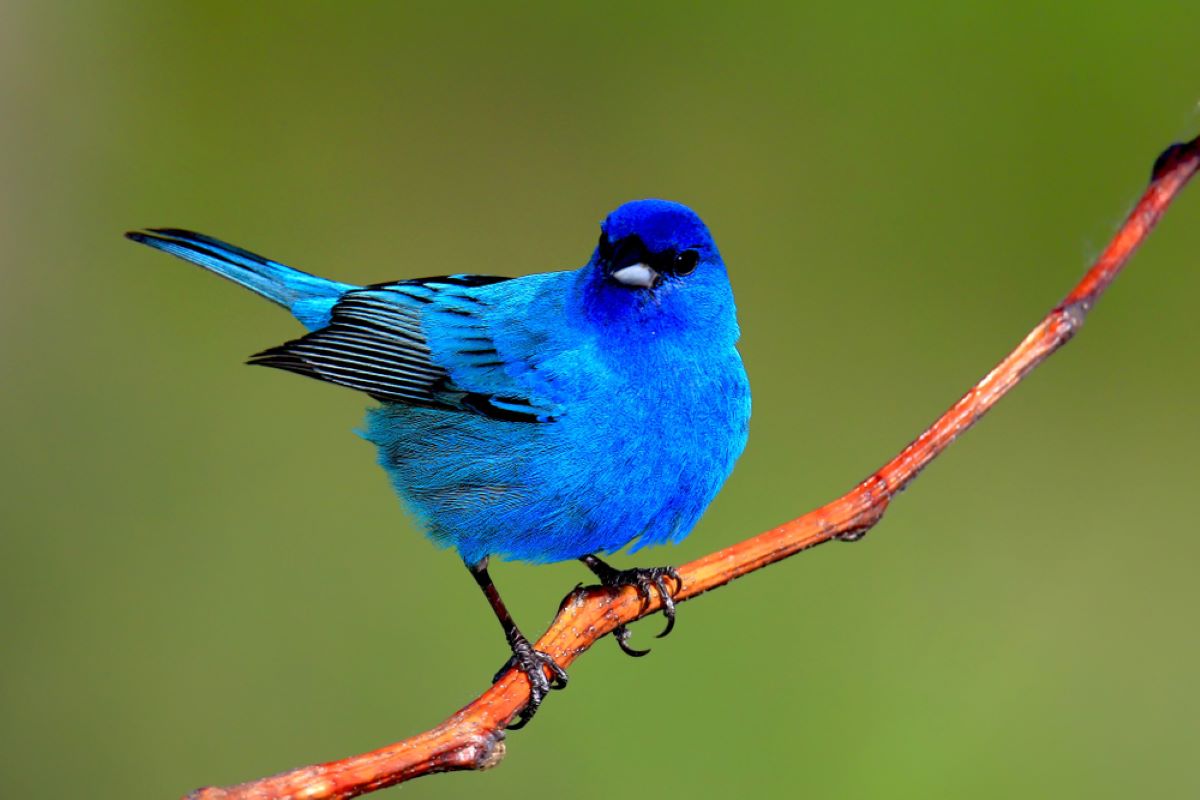Indigo bunting is one of the prettiest birds in the cardinal family. It’s strikingly blue, similar to blue buntings. Indigos’ ideal habitats are forest edges, shrubby areas, and roadsides. Some of the oldest birds reached 13 years of age.
If you’d like to learn more about their mating process and diet, check out the information below. You’ll also get to read about other similar birds and see how to distinguish indigo buntings.
Indigo Bunting Taxonomy and Appearance
Indigo bunting (passerina cyanea) belongs to the Cardinalidae family and the order of passeriformes. Its conservation status is ‘least concern.’ These songbirds are sparrow-sized, stocky, with short tails. Their length ranges from 4.7 to 5.1 inches, and they have a wingspan of 7.5 to 8.7 inches.
You’ll hear indigos singing from phone lines all through the summer. Their communication sounds like a sharp “chip” and is used as an alarm. On the other hand, a high-pitched “zeeep” is used during flight to stay in touch with others in the flock.
Indigo Buntings Nesting and Diet
Indigos are usually monogamous but aren’t always devoted to only one partner. They tend to hybridize with lazuli buntings. Females are alone, solely responsible for nest building and incubation. Their clutch consists of 1 to 4 eggs, white without any markings.
Eggs hatch after about 13 days. Chicks will fledge 13 days after hatching. Most indigo bunting pairs raise 2 broods annually. Males may feed the young while females take care of another clutch. Unfortunately, these birds are often victims of nest parasitism and may raise brown-headed cowbirds’ eggs instead.
Their nests are usually located in dense shrubs and low trees. They’re constructed of coarse grass, leaves, stems, and barks, all lined with soft grass or deer hair. Spider web keeps it all together.
When it comes to diet, indigo buntings eat insects during summer and small seeds during winter. Their favorite foods include:
- Berries
- Caterpillars
- Spiders
- Beetles
Young birds usually eat insects, which are a source of protein. Additionally, indigos don’t drink water often—they get most of the water from foods.

Are Blue Buntings and Indigo Buntings the Same?
Blue buntings and indigo buntings aren’t the same birds. While both are bright blue, blue bunting (cyanocompsa parellina) is often found in woodland edges of Mexico and Central America. They’re irregular in Texas, visiting primarily in winter. They have shiny patches on their heads, a dark bill, and a patch of black that stretches from the top end of the beak to their eyes.
On the other hand, indigo bunting (passerina cyanea) has a grey beak. They lack the dark streak and shiny patches on the head. Indigos are often seen around bushy rural areas.
Female Indigo Bunting vs. Male
This bird displays sexual dimorphism in the coloration. The adult male is a vibrant blue with bright plumage to attract females during the breeding season. During winter, the adult male indigo bunting turns brown. On the other hand, females are brownish year-round.
Females also have a whitish throat and a bit of blue on their wings or tails. Their underparts are lighter brown. Females’ wing bars are distinct, streaked with dark markings underneath.
Young birds look like females, but males may have hints of blue on their tails and shoulders. Adult females have a light brown and blue beak. Adult males’ beaks are brown-black in the upper part and light blue in the lower. Both have black and gray legs and feet.
Comparison to Other Similar Birds
Many birds of North America are bright blue, so you may mistake one bird species for another. For example, cowbirds look like blue sparrows, but they have brown heads. The Eastern bluebird is also among the similar species, only with a pale orange throat that extends towards their bellies.
Indigo buntings are also close to blue grosbeak, which have a tiny black mask in front of their eyes and chestnut wing bars. On the other hand, lazuli bunting is a bit more colorful yet a close relative to indigos. Lazulis are recognizable for their white belly, pumpkin-colored breasts, and white sections on their wings.
Finally, painted bunting is the most colorful of all. Its head is blue, its chest and belly are bright red, and the upper part of its wings is green. There’s also a patch of yellow in between their wings on their backs.

What Is the Main Habitat for Indigo Buntings?
These North American birds are often spotted in bushy areas around forest edges. Shrubby areas, hedgerows, and roadsides are also their favorite spots, but some may visit clearings around deciduous woods. They like perching on the treetops and feeding in weedy fields.
Indigos are also migrants and will move in April and May and again in September and October. Their wintering grounds are around Southern Florida during breeding season. This also includes the Caribbean, Central America, Mexico, West Indies, and toward South America. They migrate at night, using the very stars as guides. During summer, their sightings include the US, as some remain as summer residents.
How Long Do Indigo Buntings Live?
On average, these beautiful birds can live 3 years, and their lifespan can be even lower. However, some indigo buntings have been around for a decade. For example, Ohio’s oldest banded bird was 13 years and 3 months old.

